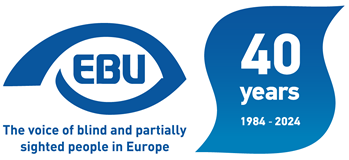Transitioning to a digital world opens the door to a wide range of products and services aimed at improving everybody’s lives. However, this process needs to be done under the principles of accessibility and inclusion so nobody is left behind. That was the key message of the International Association of Accessibility Professionals (IAAP) and the European Disability Forum (EDF) in the context of their hybrid event organised on the Web Accessibility Directive’s fourth anniversary on 24th September.
Although widely considered as a legislative milestone, Susanna Laurin (IAAP) underlined the need to extend the WAD’s coverage and improve its enforcement mechanisms. In this sense, EDF’s representatives at the session pinpointed people with disabilities’ role in the directive’s full implementation. “Persons with disabilities are essential stakeholders in providing accessibility expertise, we have to consider their feedback in the context of evaluation processes”, stated Alejando Moledo, EDF’s Deputy Director and Head of Policy.
Throughout the conference, participants also underlined the challenge of Europe’s increasingly ageing population in the context of digitalisation. “With demographic changes taking place in our continent, technological innovation must consider everybody’s needs. No one should be left behind, that’s why that now that we’re halfway in the implementation of the EU Strategy for the Rights of Persons with Disabilities 2021-2030, we should encourage change in all Member States”, pinpointed June Lowery-Kingston, Head of Unit Accessibility, Multilingualism & Safer Internet at the European Commission.
The case of mobile apps and documents
Beyond the accessibility issues related to websites, the effective implementation of the WAD also finds obstacles in domains such as mobile phone applications. Paul van Workum, Co-owner and Accessibility Consultant at ABRA, spoke about the need to understand how people with disability interact with them, while also highlighting the importance of teaching them how to use assistive technology in order to test those apps. In the same line, Jon Gibbins, Managing Director at As It Should Be, added that developers should develop them by following accessibility guidelines.
At the same time, panelists also addressed the same issues in the area of documents. Participants such as Rob Haverty, Accessibility Senior Product Manager at Adobe, emphasised his organisation’s role in working with publishers in order to make documents more accessible. In the same way, Hector Minto, Lead Accessibility Evangelist at Microsoft, pointed out that staff within companies and organisations need to be taught about the added value of accessibility when drafting documents. Furthermore, the contribution of Artificial Intelligence in this domain was also discussed. “As we get more knowledge of AI, we will be able to create more accessible documents”, added Christopher Patnoe, Head of Accessibility and Disability Inclusion for the EMEA Region at Google.
Overall, participants shared the same message: many issues and challenges lie ahead for the inclusion of our communities in the digital world. Even so, we have to work on the pillars established by the Web Accessibility Directive to build a more inclusive society where everybody can benefit from the potential of technological inventions.

